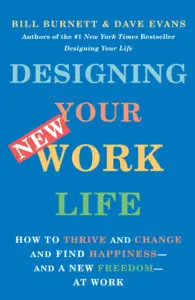In the new hybrid workforce model, everything needs to be more intentional, and that’s probably a good thing. Expectations will have to be made more clear, and two-way communication and feedback will have to be more explicit in a remote work scenario.
That’s a good change. And workers will be rewarded for what they produce, not just for “face time” with the boss (pun intended). In fact, useless video meetings, where nothing gets done, will become less and less tolerated as “video fatigue” and effective time management become more important and more visible. When there’s no one around to watch you while you work, what you do becomes much more important than how you do it.
This means that leaders will shift from managing you (which never really worked anyway) to managing results—the output and deliverables that make a project a success. By the way, high-performance leaders have been managing this way already. Now, all managers and leaders will follow suit because that’s what the situation demands.
In the new world of accountability, it’s all about deliverables, and these show up in one of two forms—writing, mostly emails and status reports nowadays, and presentations.
Design better deliverables
To communicate effectively, you probably need to amp up your writing skills. A huge percentage of your work product will be documented in emails and status reports. Writing a short and to-the-point email is a skill that few possess, so if you get good at this, you’ll be noticed. Crafting an email or a clear memo subject line helps busy people figure out which documents need to be opened now and which can be held for later. Keeping your emails short and to the point, with a clear takeaway or request for action, is important and a gift to anyone with an overloaded inbox (and that’s everyone). If your work group uses modern digital team-management software like Slack, Microsoft Teams, or whichever new collaboration platform your company adopted last week, you need to spend the time it takes to become a power user.
Your boss will notice.
If you are not sure that your grammar and punctuation are up to snuff, go immediately to the bookstore (pick a local one, please) and purchase a copy of The Elements of Style by William Strunk Jr. and E. B. White. First published in its full form in 1919 by Strunk and later updated and revised by White in 1959, it is the writer’s reference for all things grammatical. Read it—no, memorize it. Your writing will improve immensely.
Death by PowerPoint
While the day-to-day of business communication is mostly done by emails, the important stuff, the big milestones and project decisions, happens in meetings. This generally means someone is making a presentation with “slides.” This is where an investment in your business presentation skills, if you are willing to do it, will pay off a hundred times over.
There is a good reason that the phrase “death by PowerPoint” is ubiquitous in the work world. Most presentations are dreadful. They are always too long, poorly organized, badly designed, boring, and just plain ugly. Trust us, we know. Research academics make some of the worst slide presentations ever seen. When we attend technical conferences, we are assaulted by unreadable fonts, terrible graphics, way too many words on a slide, and diagrams that are often indecipherable. Add a droning voice-over, a presenter reading each and every word on every slide, and you can’t help but put your audience to sleep.
You don’t want to be that person.
Look, if you have the chance to present your work or your team’s work, you have an obligation to make your presentation understandable, engaging, and effective. If you are going to take even 10 minutes of everyone’s precious time to present something, you better make it worth it. You need to design your presentation with care and attention, just as you design anything that represents you as a creative person.
As Bill Burnett, coauthor of Designing Your New Work Life, teaches his students, a presentation is always a performance. When you are a presenter, you are onstage, and you are responsible for making your time onstage memorable. In general, people remember what they see, not what they hear, so your graphics and your body language are more important than your words. And people generally can remember only three things—so organize your performance around the three most important takeaways.
Every good presentation also tells a story. The French-Swiss filmmaker Jean-Luc Godard famously said, “A story should have a beginning, a middle, and an end, but not necessarily in that order.” So to keep it interesting, be willing to mix it up.
Christopher Booker, in his book The Seven Basic Plots: Why We Tell Stories, claimed that there are only seven plots, and these are the backbone of all human stories:
- Overcoming the Monster (Little Red Riding Hood, Jaws)
- Rags to Riches (Cinderella, David Copperfield, Rocky)
- The Quest (The Odyssey, Star Wars, The Lord of the Rings)
- Voyage and Return (Alice’s Adventures in Wonderland, Gulliver’s Travels)
- Comedy (Shakespeare’s comedies, The Hangover trilogy)
- Tragedy (Hamlet, Romeo and Juliet)
- Rebirth (A Christmas Carol, Groundhog Day)
Whether he’s right or not is not the point. These seven plots make great presentations.
As an exercise, Bill has his students construct a simple presentation about something they are working on, 12 to 15 slides in all, using the default Calibri PowerPoint font, with no graphics or pictures. They then give a five-minute presentation with this deck to the whole class, live. The results are predictably boring.
Then he asks them to redesign the presentation around a story, using one of the seven basic plots. They must reduce the number of slides by 30% and the number of words by 50%. This is critical—you don’t want the audience reading slides, you want them paying attention to you, the presenter. The students must also isolate and define the three takeaways from the presentation. He asks them to be specific in the fonts they choose and in the graphic layout of their slides. Where a picture can tell the story better, they should substitute meaningful charts and images in place of the words—a critical step if they are going to cut by half the number of words in the presentation.

He also requires them to practice the presentation five times in front of a mirror, concentrating on their body language and nonverbal expression. Making a video is even better, so they can review and critique their own performance.
Then they must give the presentation to a friend or colleague, and ask that person to write down the three key points that were stressed in the presentation. If they fail to name the three key points, his students must redesign the presentation and try again.
Then after that redesign, they give their presentation to the class live, and the results are predictably fantastic.
The project “overcame the monster” of a big, hairy technical problem and is now back on schedule and headed for success.
The simple idea for redesigning the “buy” button has resulted in a “rags to riches” success story as more people click through to the shopping cart.
We’re not there yet, but let me tell you about the fascinating journey our project is on! We’ve tried many things and been to many places; our “Quest” is a good one, and we are certain to arrive one day at the solution that everyone loves.
Nowadays, Bill rarely has to sit through a boring presentation, at least from his students, and they leave his program ready to communicate their ideas effectively and with style. They know how to design their presentation, communicate with confident body language, and convince audiences (and bosses) that they are doing great work. In our new work lives, we should all be doing the same.
Excerpted from Designing Your New Work Life by Bill Burnett and Dave Evans, published by Vintage Books October 26, 2021) . Copyright © 2020, 2021 by William Burnett and David J. Evans. Published by arrangement with Vintage Books, an imprint of The Knopf Doubleday Group, a division of Penguin Random House LLC.
Bill Burnett is the executive director of the Stanford Design Program, and was a product leader for Apple’s groundbreaking PowerBook business. He directs the undergraduate and graduate program in design at Stanford.
Dave Evans is the codirector of the Stanford Life Design Lab, and a cofounder of Electronic Arts, one of the world’s largest interactive entertainment companies. He holds a Master’s in mechanical engineering from Stanford.
Recognize your brand’s excellence by applying to this year’s Brands That Matter Awards before the early-rate deadline, May 3.
